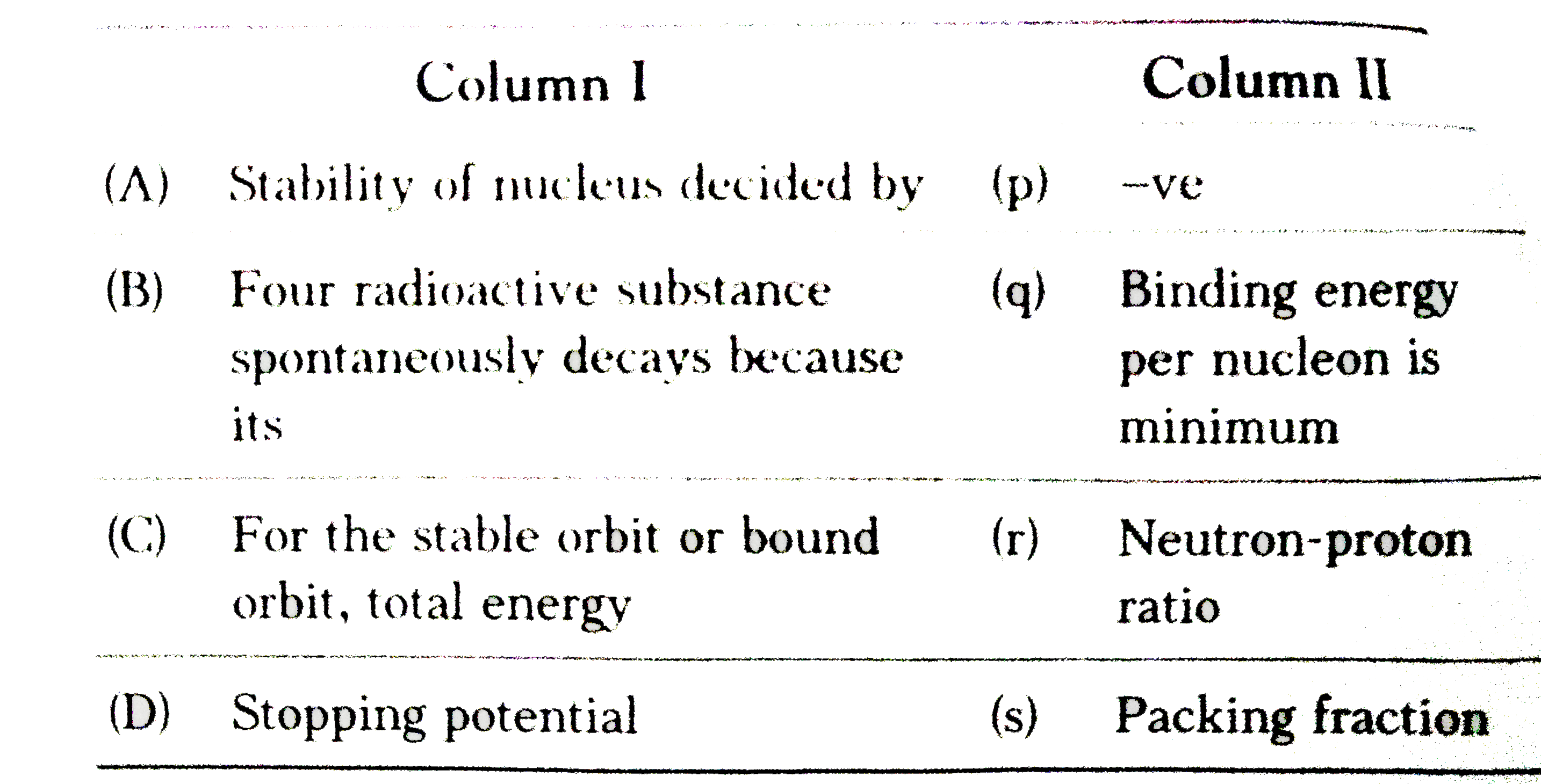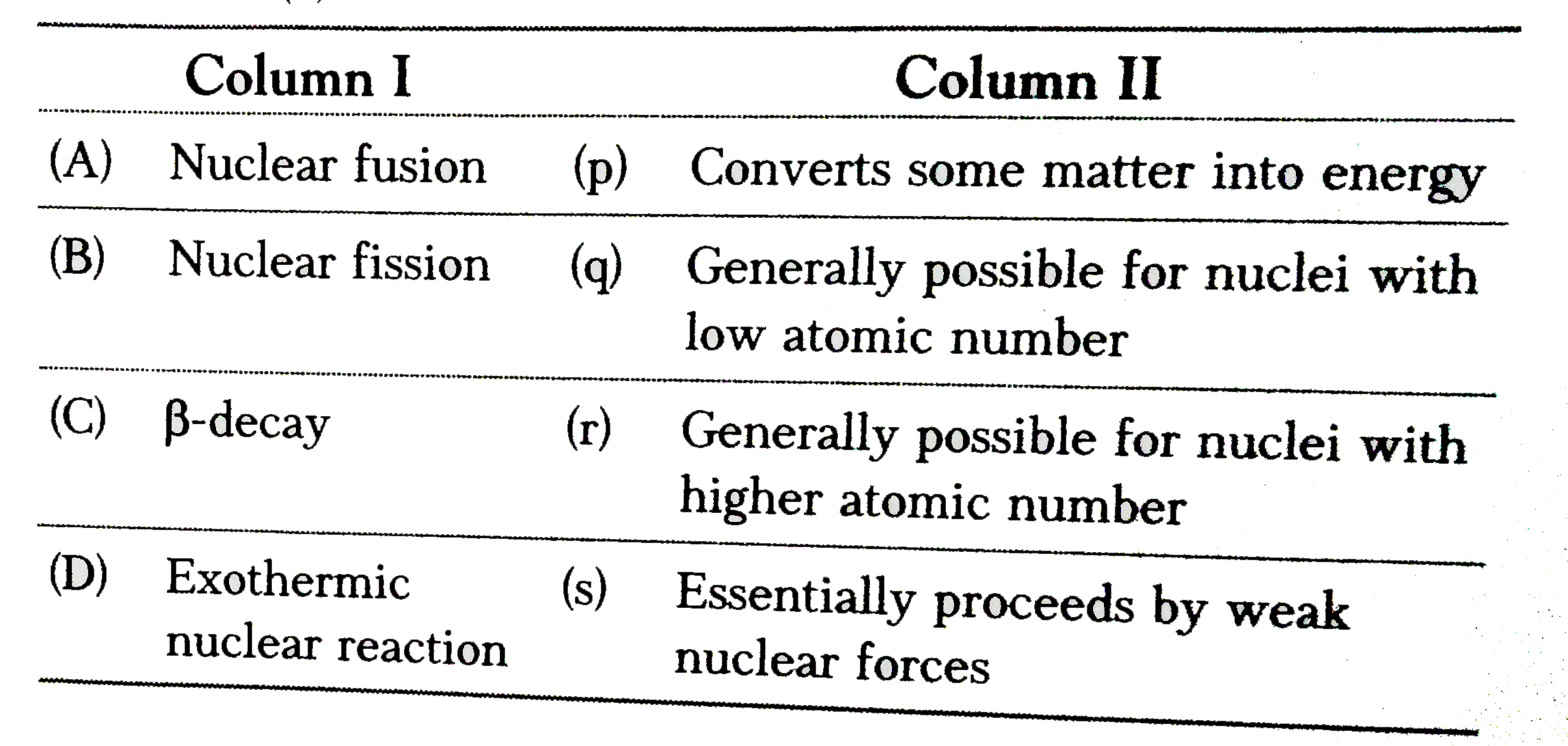Match the column I with column II and mark the appropriate choice.
Column IColumn II(A)Fe(OH)3(i)Ksp=s2(B)Ag2CrO4(ii)Ksp=27s4(C)CH3COOAg(iii)Ksp=108s5(D)Ca3(PO4)(iv)Ksp=4s3
(A) → (iii) , (B) → (ii) , (C )→ (iv) , (D) → (i)
(A) → (ii) , (B) → (iv) , (C )→ (i) , (D) → (iii)
(A) → (i) , (B) → (iii) , (C )→ (ii) , (D) → (iv)
(A) → (iv) , (B) → (i) , (C )→ (iii) , (D) → (ii)
The correct Answer is:2
Step by step video & image solution for Match the column I with column II and mark the appropriate choice. {:(,"Column I",,"Column II",),((A),Fe(OH)_(3),(i),K_(sp)=s^(2),),((B),Ag_(2)CrO_(4),(ii),K_(sp)=27s^(4),),((C),CH_(3)COOAg,(iii),K_(sp)=108s^(5),),((D),Ca_(3)(PO_(4)),(iv),K_(sp)=4s^(3),):} by Chemistry experts to help you in doubts & scoring excellent marks in Class 12 exams.
Updated on:21/07/2023Topper's Solved these Questions
Similar Questions
Knowledge Check
Match the column I with column II and mark the appropriate choice.
Column IColumn II(A)C2H2(i)sp3d2 hybridisation(B)SF6(ii)sp3d3 hybridisation(C)SO2(iii)sp hybridisation(D)IF7(iv)sp2 hybridisationA(A)→(i),(B)→(iii),(C)→(ii),(D)→(iv)B(A)→(iii),(B)→(i),(C)→(iv),(D)→(ii)C(A)→(ii),(B)→(iii),(C)→(i),(D)→(iv)D(A)→(iv),(B)→(i),(C)→(iii),(D)→(ii)Match the compounds given in column I with oxidation states of carbon given in column II and mark the appropriate choice.
Column IColumn II(A)C6H12O6 (i) +3(B)CHCl3 (ii) -3(C)CH3CH3 (iii) +2(D)(COOH)2 (iv) 0A(A) → (iv), (B) → (iii), (C) → (ii), (D) → (i)B(A) → (i), (B) → (ii), (C) → (iii), (D) → (iv)C(A) → (ii), (B) → (iii), (C) → (iv), (D) → (i)D(A) → (iii), (B) → (ii), (C) → (i), (D) → (iv)Match the column I with column II and mark the appropriate choice.
Column IColumn II(A)Borax(i)Na3AIF6(B)Inorganic benzene(ii)Na2B4O7.10H2O(C)Cryolite(iii)AI2O3.2H2O(D)Bauxite(iv)B3N3H6A(A) → (ii), (B) → (iv), (C ) → (i), (D) → (iii)B(A) → (i), (B) → (ii), (C ) → (iii), (D) → (iv)C(A) → (ii), (B) → (iii), (C ) → (i), (D) → (vi)D(A) → (iii), (B) → (i), (C ) → (ii), (D) → (iv)
Match the statement in Column I to the appropriate statement(s) from Column II.

View SolutionMatch the species in Column 1 with the type of hybrid orbitals in Column II.
Column IColumn II(a)SF4(i)sp3d2(b)lF5(ii)d2sp3(c)NO+2(iii)sp3d(d)NH+4(iv)sp3(v)sp
View SolutionMatch the statement in Column I to the approprate statement(s) from Column II.

View SolutionMatch the Column I with column II and mark the appropriate choice.
Column IColumn II(A)Coal gas(i)CO+H2(B)Synthesis gas(ii)CH4(C)Producer gas(iii)H2+CH4+CO(D)Natural gas(iv)CO+N2
View SolutionMatch the rate law given in column I with the dimensions of rate constants given in column II and mark the appropriate choice.
Column IColumn II(A)Rate=k[NH3]0(i)molL−1s−1(B)Rate=k[H2O2][I−](ii)Lmol−1s−1(C)Rate=k[CH3CHO]3/2(iii)S−1(D)Rate=k[C5H5CI](iv)L1/2mol−1/2s−1
View Solution

